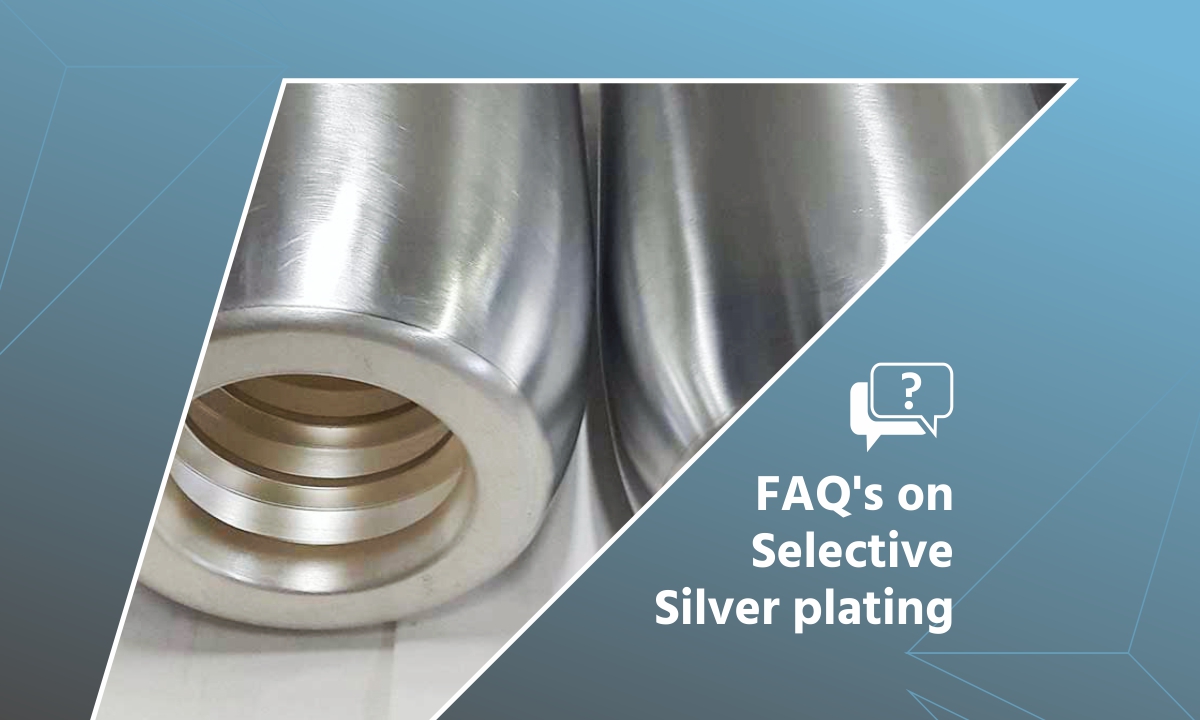Silver plating is used in a wide range of applications, including electronics, telecommunications, aerospace, and automotive industries. It is commonly used to improve the electrical conductivity and corrosion resistance of contacts, connectors, and other components.
Silver plating requires specialized technical expertise to ensure the proper plating process, masking, and handling of the plated parts. Here are some frequently asked questions (FAQs) on selective silver platings.
What is Selective Plating?
Selective electroplating is a portable plating method used to enhance, repair, and refurbish localized areas on manufactured components
Selective plating includes processes in which solution can be applied via a brush or encapsulated or cell plating flow tools.
What is selective Silver plating?
Selective silver plating is used objects and mechanical components with additional and desired properties of a specific metal.
The reasons for plating a component or object in metal can range from just adding a nice, metallic aesthetic to a decorative object or a need for the essential physical, mechanical and chemical properties of the specific metal or alloy for performance purposes. Improved corrosion resistance, strength, durability, reduced friction, increased solderability and even changes to conductivity might all be factors in selecting a component for the plating process.
Selective plating is often used when some of the localized part or area requires plating.
How is silver plating done?
Selective plating or brush plating is a method related to electroplating. It is used when plating is needed in more localized areas of components.
The brush is a piece of stainless steel metal wrapped in cloth. It holds the plating solution and prevents the component from being plated from making direct contact. An operator does the localized plating with the brush using a low voltage current. Achieving uniform localized plating with a brush requires considerable skill. Brush plating enables specific spot plating which is useful mostly for purpose of repair and refurbishment of components. Whereas electroplating involves full component being given an electrolyte bath, brush plating applies the electrolyte plating solution to a targeted area and uses anode connected to the wire.
What are some of key applications for silver plating?
Aluminum castings & forgings, Long GIB conductors, ID & OD plating
the list includes the electronics i.e. connectors and semi-conductors, bearings, musical instruments, and up and coming power generation e.g. solar and battery.
Why choose Silver plating
Silver is an extremely ductile metal and has the highest thermal and electrical conductivity of all metals. The excellent high-temperature lubricity of silver makes it an excellent coating material for anti-seizing and anti-galling applications. while being a more economical alternative to gold plating, silver plating also helps improve the corrosion resistance of plated metals.
Silver Plating advantage offer by Sargam
The Sargam industries brings in the difference through its 4 decades of expertise. Any Sargam engineer will be able to guide you to the most economic silver coating to conform to your product’s needs. Many times, when silver is called out, the end user does not know or specify type and amount of silver to be applied. This is where the Sargam’s silver plating service can make the difference.
Does silver platings hides the deformities, base surface defects
No plating does not hide deformities. Selective silver plating involves processes like alkaline and acidic dips, Etching processes which increase the deformities and base surface defects. Selective silver plating does not high any deformities and defects.

